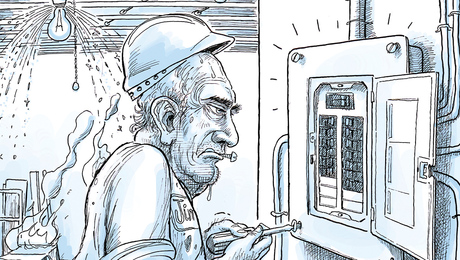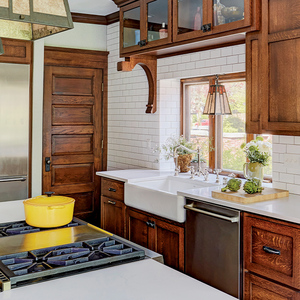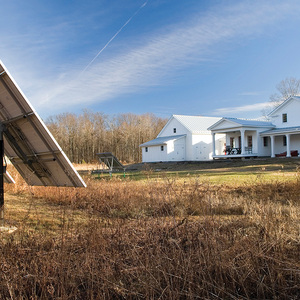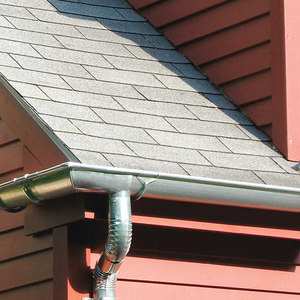backfill material * native or structural
I am backfilling against a 7′ high foundation wall for an area that would eventually be a rear driveway to our house. The contractor wants $30K to remove the dirt and import in structural fill for a 95% compaction. His rationale is that he does not want the dirt to sink in the future and crack the driveway. My question: Can I just compact the dirt the best I can now (too much moisture in Seattle winter to get great compaction) and let the dirt sit over the winter and gravity will force any settlement so I could do my driveway next summer? Is there a rule of thumb on earth settlement – like it sinks 90% in first X years, etc…? What can I do to minimize earth settlement using native fill (sandy clay) during backfill to avoid bringing in structural fill?
Thx.



















Replies
Use a sandy fill with higher gravel content, commonly referred to as structural fill. Keep your pile dry w/ visqueen and fill in lifts w/ compaction in between. Seattle moisture is no problem with the correct dirt.
If you backfill with clay soup, it'll only lead to headaches later on. You can't compact it because it liqifies under vibration, it shifts with seismic activity, and it exerts hydraulic pressure on our house that you probably would rather avoid.
"A wrongdoer is often a man who has left something undone, not always one who has done something."--Marcus Aurelius
I agree, with just one caution, I have no idea how long your 7' high wall has been inplace , nor what kind of reinforcment it has in it. You need to ensure that the wall will take the pressure of compaction against it, the compaction generates a lot of pressure against walls and I have seen more than one wall either crack or bow substantially because of either over compacting or compacting with out shoring and bracing the wall properly.
The time for the wall to reach the strength it needs to hold up to the pressure depends on a lot of variables. Might check with an engineer on it.
My question: Can I just compact the dirt the best I can now (too much moisture in Seattle winter to get great compaction) and let the dirt sit over the winter and gravity will force any settlement so I could do my driveway next summer?
My answer: NFW
If you wanty a different answer go to http://.forums.howtodestroyyourporpertybeforeitsbuilt.com
Link didn't work for me.
Assuming that "N" was for "no"... I won't pretend to have any knowledge of Seattle, other than land-shopping the vicinity once.
I backfilled my 15' with local clay/dirt. I run a 23,000 lb tractor back there occasionally. No problem. Wall was cured before backfilling, no compactor other than small tractor.
Apparently not a fluke as I've done the same elsewhere, but vehicle traffic never exceeded my 14,000 lb truck.PAHS Designer/Builder- Bury it!
>> I backfilled my 15' with local clay/dirt. << Just curious: how thick is that wall and how many tons of steel are in it?
Probably not much different from your houses... Here you go, x 50':PAHS Designer/Builder- Bury it!
I think one big item is the difference in soil type, and amount of ground water and rain at the time of back filling. Seattle area just had the wettest november on record, unless the originial dirt was really well covered it is going to be somewhere between soup and grease by now.
I know the clay soils around there and rumor has it the old farmers used the stuff for axle grease in the winter months. Hugely expansive soils, not something I would dump in a hole and hope it shrinks and dies out into anything near compacted dirt.
Local excavators would know what they are talking about and probably trying to give best advice and forestall a law suit over later sinking .
Import good fill .
Import good fill .
Uh, I guess you meant to address that to Streamline. Clearly has nothing to do with my rear wall or backfill.PAHS Designer/Builder- Bury it!
Your partially correct , I was really aiming it to be to "All", just to late at night and felt lazy.
Nice work there on that house. Looks like a fun project .I am curious what you did to maintain the 1' of drain rock curtain as you placed your fill , always problematic to do.
I don't know about other parts of the country but here in Ore. (or at least in the area I live in ) all basement walls have to be engineered as retaining walls with seismic considerations, seeing large footings lots of bar isn't unusual.
So much of the design criteria depends on the building design,local circumstances and site conditions. I sometimes work as a Project Super on commercial work . Last project we had to blast and remove 23 thous. cu. yrds. of rocky soils (what wasn't rock is clay) , place 28 ft. high CIP walls, 8"thick mostly sitting on 30" wide footings. Building was over 100 ft. long against the hillside above it. Overturning resistance came from CIP interior walls about every 25' down the length of the wall. Given what we had to work in a space that varied from 3' to 8' wide to back fill the site in that 28' tall hole the most cost effective solution was to fill the overdig with imported pea gravel, all 1,500 cu. yards of it it took to get around 3 sides of the building. Placed it using a conveyor truck to shoot it into the hole, took 1 1/2 days and we were ready to go .
I still wouldn't place excavated native dirt back in the hole if you already know you cannot achieve compaction, as was mentioned earlier it can take up to 10 yrs. to reach compaction from settling.
Edited 12/2/2006 6:48 pm ET by dovetail97128
I am curious what you did to maintain the 1' of drain rock curtain as you placed your fill , always problematic to do.
Totally ignored it. No stone.
That was one area the engineer was wrong and I knew better. For PAHS there's no drainage necessary. The insulation umbrella goes out so far past the footprint that there's no water on the outside of the wall. That's the heating/cooling storage. Also means no water-proofing need. 6 mil poly is all that goes back there. Same for our dirt roofs.
We have absolutely no problem using dirt as backfill, whether a house or lengthy retaining wall.PAHS Designer/Builder- Bury it!
TOM,
Since I was unfamiliar with the "PAHS" I checked it out.
Very interesting. Your house is beautiful.. how much a sq ft. to build and finish it?
I could not determine from the photos if you actually have slope retaining wall at the back or if it is simply back filled against and slopes away from the house.
How far out and where in the vertical elevation is the insulation laid? I could not find any info on that in your pics or the PAHS site I was on.
I am no stranger to energy efficient building and have built or helped build underground, earth bermed, super insulated, solar (both active and passive) etc. over the yrs. Are there some sites you can direct me to for more reading?
LOL... hijack alert! Everybody who's read my stuff can go elsewhere.
Thank you. This place was/is temporary until the "real" house gets built. Plan was for this to then become my furniture shop, my profession. Impress the clients...
Next house is out of the ground, barely, just over the hill. This place works so well, there are few changes for the next one other than added size and features. Large garage, 50' 2 lane lap pool, guest suite.
Cost... Surely you know the pitfalls there. I did just advise a local here (found me from that web page, put up without my knowledge) that my last client's house came in around $65/sq ft turnkey. Which was absurdly low in this area. Ebay was a factor. This is commercial construction, they don't do it due to high cost. Shell cost, more relevant, is low $20's/sq ft plus windows, doors, insulation, siding. Including roof and floor. You read the crane guy's response when he learned what the bar joists cost.
Avoiding exterior maintenance is very important to me. Goes with the passive heating/cooling attraction. I want the house to take care of me, not the other way around.
There's more mountain behind our house, slopes down to the house. Roof slopes to the buried rear. Ground water flows around the house. Wing retaining walls on the sides (turns out 45º is way too steep for dirt to sit on poly). And, of course, short retaining walls around the tops of the exposed walls to keep the dirt on the roof. Hope that answered the question I didn't exactly understand.
Insulation umbrella ideally goes out 20' from the perimeter. Reason is that's the distance heat moves in half a year through dry dirt. I cheated where I wanted to save trees. We also have far more exposed wall than recommended and only half the dirt (under the umbrella) on the roof. As a consequence, our annual temp swing, 13º, is horrible. If easy to live with. Hait got 7º. We'd do considerably better if we bothered with window coverings. And earth tubes, which frighten me in our climate.
I used xps, a truckload. What little I've dug up has had no presence of bugs or animals. Appears that the dirt on top was much more attractive as a home. This is Virginia, everything thrives here.
The very few poly seams don't need to be sealed, just over-lapped. The roof slopes 3' in 30' which is more than I'll do next time. On the client house (40' span, 3' slope) we used 2 layers of 6 mil poly with scrap carpet to protect it, then a foot of dirt, then the insulation umbrella with 3 layers of poly and more carpet. Carpet stores love it when they don't have to pay to get the dumpster emptied. Color and condition isn't very important for our use. Clients love saving money, didn't mind the dumpster-diving. He insisted on a standard footing drain, never saw a drop exit.
You found the book excerpt? http://www.axwoodfarm.com/PAHS/UmbrellaHouse.html There is very little else, although I've written a lot here, if Prospero search works. I read the book, it struck a chord, and I put my money in. Few have.
I'm still working out some details, like best dehumidification. Client house needed a mortgage (appraised 50% higher than cost- instant equity!) so we used an air source heat pump. Turns out they keep their house same temp summers as ours is. The ac is primarily dehumidification, with similar elec consumption. We use a heat pump water heater that provides 50% of our dehumidification. The client never bothered to hook his up. Kinda like us without window coverings, which they don't bother with either. Pretty comfortable to get lazy.
Resale is always a consideration so I find it prudent to at least design such that "normal" features, like central ac and thermostat heat, are able to be easily added.
I've also been through the exercise for primarily cooling climates. The numbers work. We're 4166 heating and 1131 cooling degree-days, similar to you. Hait was 8125 heating degree-days. Dirt doesn't care if you're using it for heating or cooling or both.
PAHS Designer/Builder- Bury it!
My apologize to All , sorry about the "high jack" there.
I will contact VATom directly for any further questions .
And I would still (to go back to the originial question ) not use native , excavated dirt for back fill on anything taller than 2' during the winter months when compaction is impossible.
I have seen even that depth settle over several yrs. of winters here and create a back slope to the dwelling.
Just my own lifes experience , The man asked for peoples advice , thats mine.
Dove, I was joking, shoulda included an emoticon. You're kinda new here. Hi-jacking is time-honored, particularly when a thread has pretty much run its course as this one seemingly has.
If it was a problem, I wouldn't have posted that lengthy reply. Not that others probably might wish I'd stay on topic more. It's all Sphere's fault, he showed me the path to digression.
PAHS Designer/Builder- Bury it!
No Problem ,
I understood what was going on , especially since I had noticed "streamline" had never responded to any of the answers to his thread starter.
I know that at some point after I get done reading what I can find about PAHS housing I will want to learn more. Didn't want to burden the entire group with my questions.
By the way , I looked up Seattle's soils on the USGS soils site, interesting reading if you can handle the down load. For me each back fill is site specific, always err on the side of caution when giving advice if I can. I have mostly lived and worked in one county here for 38 yrs. Within twenty miles I can go from clay that is brick quality, to 50+ alluvial top soils, to volcanic flow rock that varies from severely weathered and crumbly to hard enough to be given state approval to be quarried for topping rock on the roads and every thing in between . Soils bearing has varied from needing barely any footing spread to 5' wide for the same size house , basically same loads .
Hidden springs and seasonal springs are a constant issue with any building site that is "dug in" here, heck in town here sump pumps are required in some neighborhoods under "crawler houses", winter water table is so high . You can dig all summer and never find water, leave the cut open into the middle of winter and you may have garden hose size streams issuing from the sides of your cut in some digs. Makes one cautious about what works for every one everywhere.
Thanks for the info and lead into the PAHS house design stuff, fascinating to me.
Glad you're interested. If I knew of a better house for my next one, I'd build it instead of PAHS. Bear in mind, we're only talking heating/cooling system, not architecture. PAHS can look like about anything you can imagine.
PAHS Designer/Builder- Bury it!
Edited 12/4/2006 10:07 am ET by VaTom
Tom, Few more off the top of the head questions. What insulation do you use, how and what do you seal seams with.
"Plastic" 6 mil. vysqueen same question about sealing seams.
Edited 12/2/2006 4:54 pm ET by dovetail97128
A 14" thick concrete foundation is not normally found in residential construction around here, but then again, most all of what I have worked on/built are/were "standard" type homes.
LOL... Yeah and you probably don't see much #7 rebar in your 9' wide footings.
This functions like a retaining wall so we don't get cracks in the side walls, common to walk-out basements. My building dept. told me to use about half the steel when they learned which engineer I'd hired.
I replied "great, which half?". They said it was my call. Right, the guy who knows nothing decides.
Normal here is 8" walls with maybe a #4 running horiz. Sometimes a connection between the footing and wall, often not. The main foundation company here was ready to give me a 2' wide footing, not even a keyway, and a pair of #4 horiz, inside an 8" wall that tall. Scared me enough to see the engineer.
I guess it's overbuilt, but the expense isn't significant in the overall cost of the house. Certainly not something I'm going to second-guess with a couple hundred tons overhead. The shell's still coming in cheaper than most houses. Got another very excited woman here, waiting on the sale of her house. Land search begins. PAHS Designer/Builder- Bury it!
I missed the part about the #7s...
So, which 1/2 of the steel did you omit? :-)
So, which 1/2 of the steel did you omit? :-)
Had to consider that for awhile, but it was early in the project and I was flush with cash.
I did ask the engineer if my curved walls didn't add some strength. He agreed and pointed out that the rebar for a flat wall was a lot cheaper to buy than paying him to engineer a curved wall. The inspector's jaw hit her pad when she inspected the footer, never seen anything like that residentially. After that, everybody knew of my project.
Check out our crane on this OSHA-approved site. BTW, forming 2 tall curved walls parallel was a little difficult, especially for first-timers (we all 3 were). Heath's up 16':PAHS Designer/Builder- Bury it!
You need to do another one of those PAHS and take a lot of photos documenting each step...and start a thread in the photo gallery so that we can see it :)
jt8
"Even if I knew that tomorrow the world would go to pieces, I would still plant my apple tree." -- Dr. Martin Luther King, Jr.
Maybe when I get back to pouring concrete for the next one.
You're more interested than most, why I started with that caution about redundancy. Newer arrivals, like Dovetail, find the concept novel. SOS otherwise.
Now, if I do manage a thin shell PAHS, that'll be more interesting.PAHS Designer/Builder- Bury it!
Basement, what is a basement?
The only plan I have seen here in this area of TX is a plan advertised with a "Texas Basement". I viewed the plan with curosity and found the "Texas Basement" to be a room in the Attic.
Personally, I am glad we do not have to deal with basements, excavations, structural walls, backfill and associated drainage / waterproofing issues.
Words can't express how bummed I was when that link didn't work...
If someone hasn't made that a website yet, I'm sure they could come up with plenty of source material!
Man, you are funnier 'n sh!t. I am trying to eat lunch and just spit it all over the screen.
Nichols747 <!----><!---->
(|;<)SamT
Now if I could just remember that I am a businessman with a hammer and not a craftsman with a business.....segundo <!----><!---->
It does not matter what fill material you use because you have time on your side.
Let me explain what I mean by that. What your going to do is backfill the area and grade the dirt for the future driveway. The key point is now you will be able to drive vehicles on the future driveway dirt. This driving on dirt will compact the dirt further and reveal any soft spots. By elimination of soft spots and fully compacting has allowed cement trucks parking on my driveways without cracking.
fill it ,drive on it this winter ,then pour your driveway. if it cracks and falls, have a bobcat pull it out and pour a new one.what would that cost 5 grand? your still 25k ahead. unless it's one big dang driveway. larry
hand me the chainsaw, i need to trim the casing just a hair.
anything but fat clay or organic topsoil. I like sand but we dont have basements. if you dont have a basement, fill in one lift with white sand no clay no color and flood with water hose, about a 1000 gallons. trust me.
Use pea gravel. It packs normally in the high 90's all buy itself. Perfect for Seattle ,think of the drainage,but it costs a little more.
There's a great rule of thumb for settling backfill:
Any disturbed soil from plumbing trenches will be fully settled by the time the plumber has burned his bridges and is working on a new set of contractors, at which time he will deny any wrong doing and blame the cracked slab on the concrete guys.
Disturbed soil from utility trenches will fully settle as soon as the area is covered with sod and the roots have taken hold, making adjustments harder than it should be.
Uncompacted backfill under driveway slabs will quit settling halfway through the concrete guy's jail time for cooking meth.
Pour a front step and you'll enjoy a few years of ever increasing slope to them and a great big separation from the house that helps to keep unwanted dirt and debris from making it's way inside by allowing gravity to simply slide the dirt away from the house where it should be.
At about the 3 year mark (the first significant rain and ground saturation in your area) you can rest assured that the rebar in your footer is crying uncle as the over-dug hole in snail-snot clay does it's best imitation of the sand funnel critters that tried to eat princes Leia, or was it Luke? Anyway she was so hot in chains.
What were we talking about? Oh yeah.
We're really talking simantics since nothing is perfectly plumb, straight, level or compacted. If you're one of the lucky ones a fountain of youth will spring up in your hillside mansion and the house will become a ship of sorts, slowly floating down the river nye. Perfect for those who enjoy change.
Of course being in the rainforest you're used to water in places that the rest of us can only dream of. Without a place to drain to, perhaps that $30k of backfill will create a beautiful subterrainian swiming pool of sorts. Imagine living the high life surrounded by crisp cool water. You could probably sink a 3' well next to your foundation and have plenty of water to ship down to those poor bone dry Kali-forne-ans. This same trapped water will help everything settle...
...and settle...
...and settle...
A huge advantage of forgoing the backfill could be a slab with no chance whatsoever of developing cracks because it's so perfectly supported by the slurry. A mini-floating bridge of sorts. If it's built correctly it will only sink to it's boyancy point and then will be good for 100 years if not longer. Large slabs of ridgid foam underneith, a bow and stern, and you are in high cotton.
Best of luck. :-)
Beer was created so carpenters wouldn't rule the world.
Has me rolling on the floor here.. well said!
Just out of curiosity, do you know how many yards of dirt we are talking about? 30k is a whole lot of money for that kind of thing, but I have no idea of what volume of material we are talking about. Some of the price depends on how far the structured fill has to be hauled, and if the other material is being removed, how far it has to be taken - BTW - is the material to be removed to be taken off site?
Having a driveway right up next to a basement foundation is always a dicey situation especially if the foundation wall(s) weren't built with that in mind. Compacting fill up against the house like that you are taking a chance of cracking the concrete/masonry - and there's more than a slight chance. Long straight walls are more problematic than short ones with corners. For that situation, my off handed guess would be a 10" thick concrete foundation with rebar. If you have this guy do it I'd definitely get a copy of his certificate of insurance.
Like someone said above, if the driveway cracks and has to be replaced it is small peanuts compared to some of the other amounts of money involved.
If you do the work yourself, understand that it will be fully your problem if the foundation fails. As far as >> let the dirt sit over the winter and gravity will force any settlement << it partially depends on the soil type but generally you would have to wait 5 or 10 years before the soil compacted itself enough to give you what you need. As some people said above, filling with aggregate would be my first thought. Only someone from your area can tell you exactly what kind though since aggregate types/names vary greatly by geographic region.
If you could move the driveway away from the house 7' then your problems would be resolved. 4' and possible foundation damage would not be such a concern. Besides, aesthetically, I always like to see landscaping between a house and pavement...
I'm East of Renton.
Don't know what area you are in, but here after 4 ft down it is cemented hardpan, teeth of a backhoe have a hard time cutting it.
30 K sound like somebody thinks you have deep pockets. I'g go to the library and read up on soils before I'd spend 30K for backfill.
There are a few areas (South of seward Park for instance) where there are clay lenses that could require extensive backfill.
Hear tell from my cousin (the geologist in the family) who did borings there after the bridge partial failure at the earthquake time) that the area around Magnolia bridge also has some clay lenses.
Own house has all natural backfill, only settling in the last 35 years was the year after the last big earthquake when on porch dropped 1/2" on one side over the next year. That probably occured 'cause the backfill for the french drains 6 ft. down possibly partially collapsed.
Heck, for 30K, you can buy yourself a $10K backhoe, dig it out, free sructural fill -- most driveway contractors will dump broken asphalt and concrete for free (great structural backfill when sluiced in with the natural soil). After you are done you can even resell the backhoe - think of the fun you will have.
PS: re: too much moisture in Seattle winter to get great compaction - au contraire, unless you are on one of the clay lenses, the 'mushy' mixed soil during heavy rains, if run over and mushed in good a few times with a 4x4 or backhoe, will be like concrete after it drains, next spring you can pour concrete on top and it will be like a concrete sub-base even. Oly thing screws that up is a hard freeze that would expand the mix, but if you mush it up good in March, unlikely there will be another freeze.
Edited 12/3/2006 10:48 am ET by junkhound
buy, use, then resell. Interesting thought. wouldn't i lose too much value for holding on for a few months? Probably an equipment rental opportunity.
How about using paver bricks? No need to worry about cracking.
How long and how wide against this 7' wall?
In other words, in cubic yards, how big is the space you need to fill?